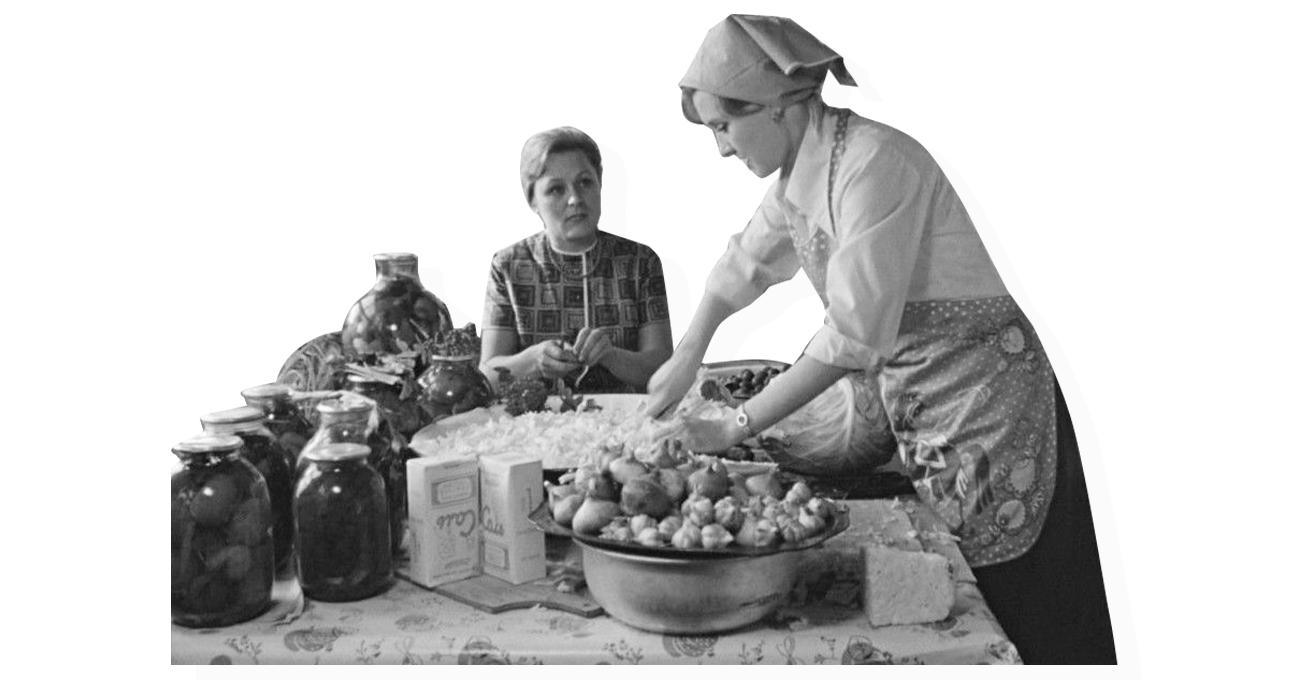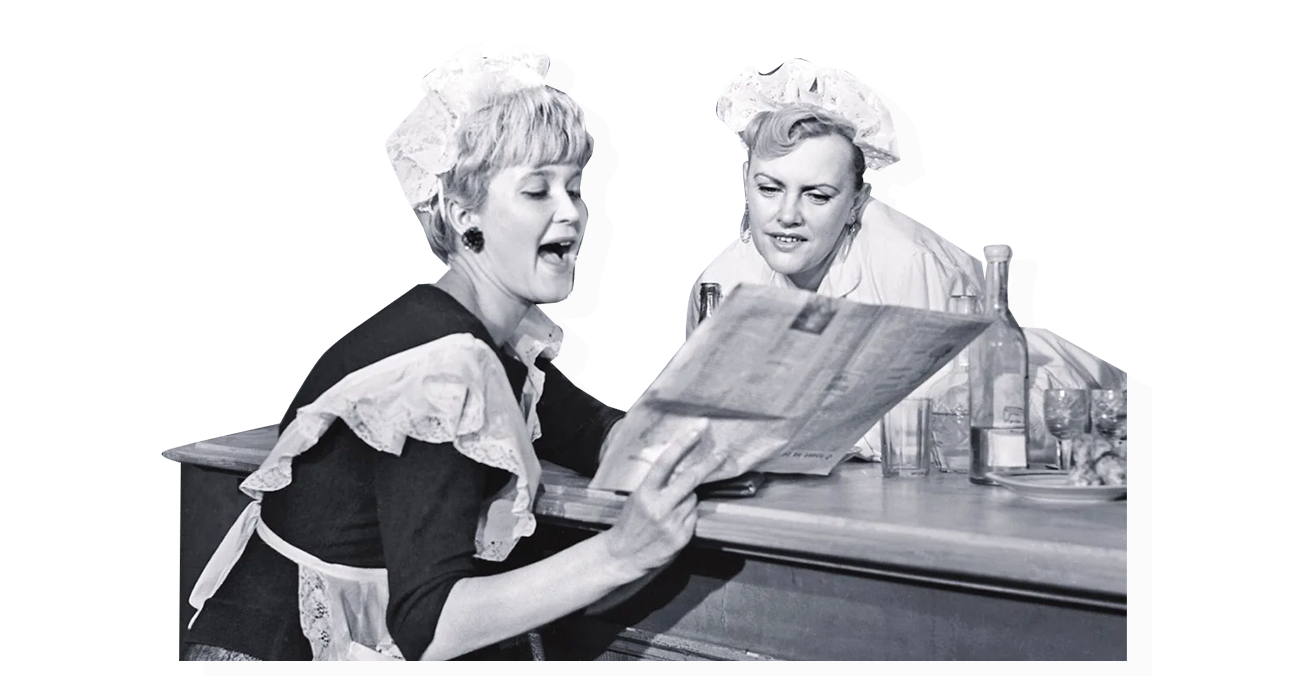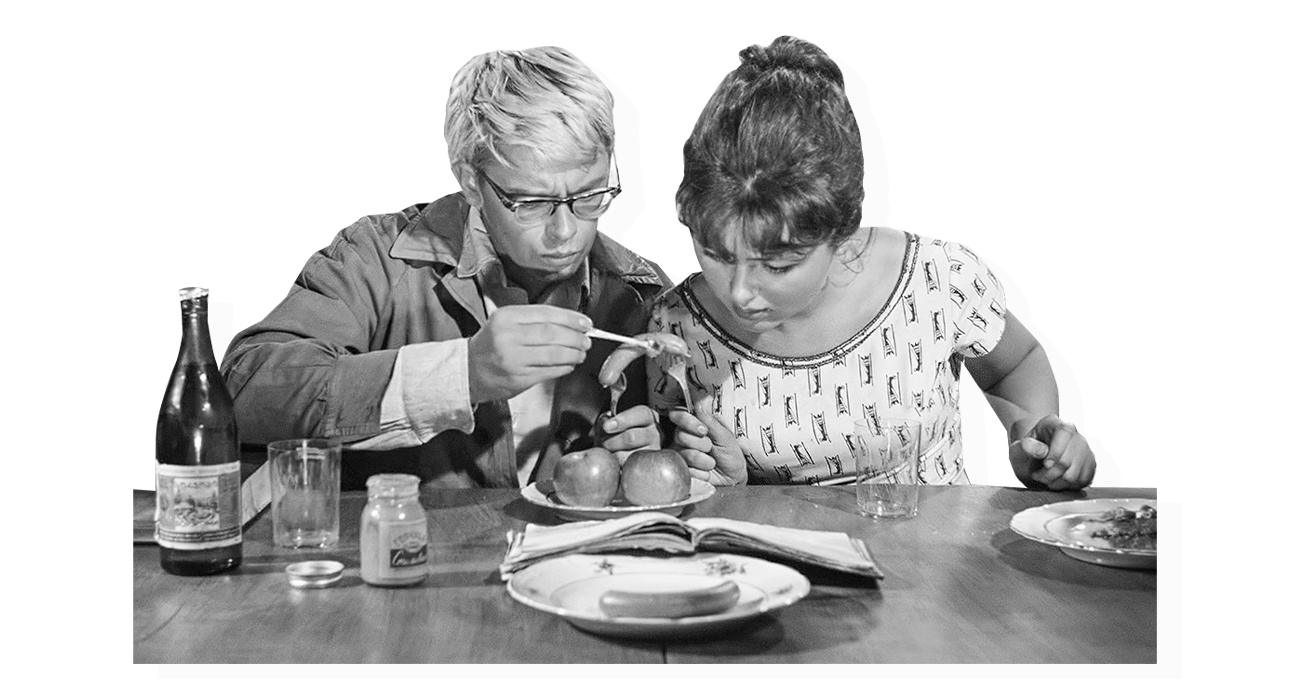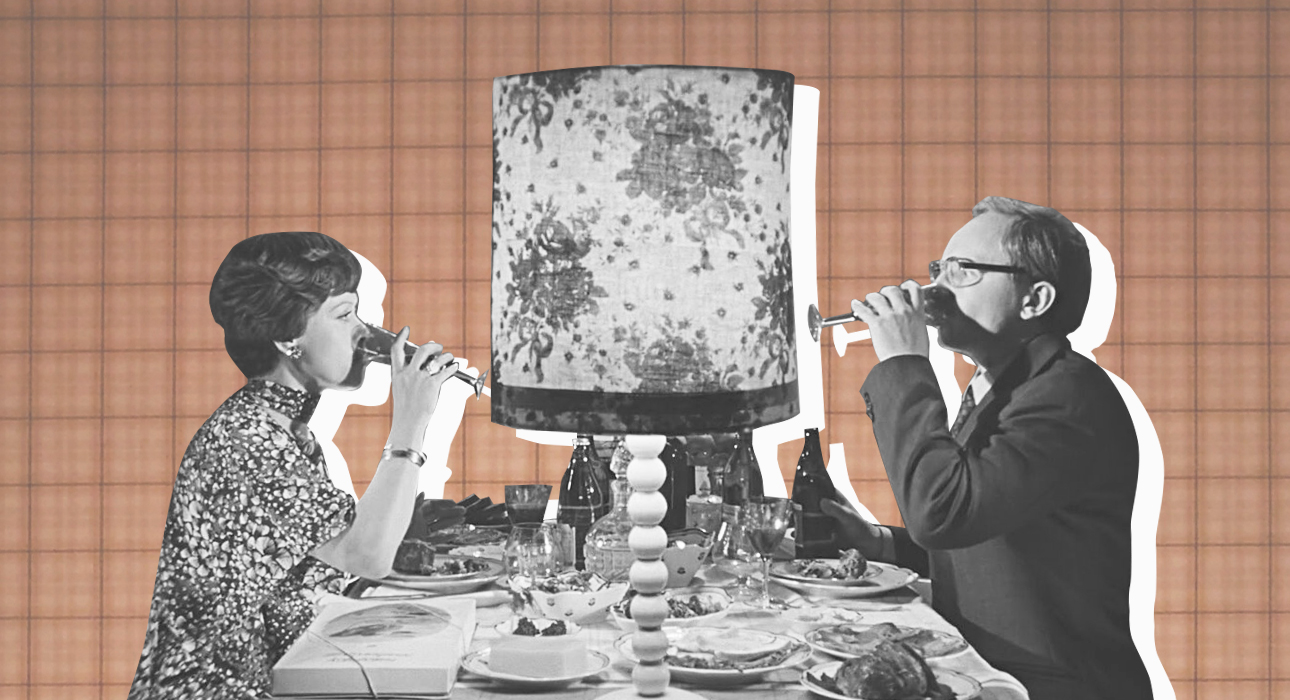Although when you hear the word “diet” your mother and grandmother are afraid of your thinness and want to feed you constantly, girls also tried to discover the secret of eternal thinness when they were little. It is generally accepted that women did not have problems with excess weight because there was no diversity in nutrition in the Soviet Union. And if there were unwanted kilograms, then no one would definitely dare to diet.
But in reality everything was exactly the same as now; except that it is difficult to find information about any dietary restrictions. But this is exactly how the same “folk diets” were born, because later everyone who tried these diets, but from the “40 kg” public, developed an eating disorder.
Let’s find out which example from the past we will definitely not adopt.
As you remember, nutrition in the USSR was aimed primarily at strengthening the bodies of workers. Most Soviet people used to eat in canteens, which were located in every establishment. In other words, there was no mention of any nutrition that would make it possible to lose weight. In addition, in the 1920s, scientists were even interested in the health of the working class, tasked with calculating the approximate daily calorie intake for different categories of workers. Thus, mental workers were entitled to 3000 kcal per day; for those engaged in mechanized labor – 3500 kcal. Mechanics, stokers and collective farmers engaged in heavy physical labor were required to receive 4000 kcal. Another category included people who performed very hard physical labor – lumberjacks, diggers, loaders. They would have to consume five thousand calories a day.

In the 1970s, the trend of the French figure reached Soviet women – hence the well-known parameters “90-60-90” and “four windows” on the legs. Why did the European figure become the standard? It’s simple – in these years, French films in which flawless actresses had ideal forms began to be shown in Soviet cinemas. Therefore, this period is considered a turning point in self-perception by Soviet women.
In large cities – Moscow and St. In St. Petersburg, girls and women of completely different ages began to try various diets that are only known to us. We talk about five terrible dietary restrictions used to lose weight in the Soviet Union.
Disclaimer: The Fashion Vibes editors do not encourage you to try any of these diets on your own. For any questions you may have regarding weight loss, you should consult a medically trained professional.
Diet No.8
Initially Diet No. 8 was a medical diet developed for people whom doctors recommended to lose excess weight. We are sure that today everyone knows this, even if it is not under this name – everything fried had to be replaced by boiled or stewed, it was necessary to eat five to six times a day, and fast carbohydrates were recommended to be avoided. The amount of salt was limited to normalize the water-salt balance. In addition, all hot and spicy foods were excluded, as they increase appetite. The daily calorie intake of Soviet diet number 8 was 1700-1800 kcal. And it was recommended to do a fasting day once a week, for example, apple or cottage cheese day. The weight came off slowly, but the results were long-lasting.
Diet of Lyubov Orlova

Lyubov Orlova is a famous Soviet actress who was the standard of beauty for many women of that time. The star herself was not at all prone to thinness, so her figure is the result of a lot of physical work and special nutrition, which later became so famous among the Soviet population. In addition to his daily diet based on a balanced diet with limited sugar and fat, the actor also followed a strict detox diet for two weeks twice a year. The menu during this period looked like this: I drank a glass of mineral water on an empty stomach and only an hour later had breakfast with two white boiled eggs, a slice of black bread and an apple. Lunch consisted of 200-300 g of boiled meat or fish, green vegetables and unsweetened fruits. Dinner was the same as lunch, except for hot dishes (if there was fish during the day, meat in the evening and vice versa).
Diet of Maya Plisetskaya
When asked how to maintain such a figure, the legendary Soviet ballerina answered briefly: “Do not eat.” And judging by his diet, he was telling the truth. His daily diet did not include meat, dairy products, eggs, flour products, sugar and coffee. In his diet, he preferred grains, vegetables (except tomatoes), fruits (except bananas) and fish. The menu for the day looked quite scary: for breakfast 100 g of porridge with water, for lunch – 150 g of vegetable soup and 100 g of vegetable salad, for dinner – 30 g of baked fish, 60 g of rice and 100 g of fresh vegetables. If you follow these recommendations, you can lose 10 kilos in two weeks. But what will it cost?
Vinegar Diet

Another terrible weight loss method of the USSR is the vinegar diet. In this diet, it is recommended to drink apple cider vinegar solution before each meal. It is believed to increase the acid level in the stomach, thus speeding up digestion. As a result, the feeling of fullness comes faster and the appetite decreases.
Vinegar diluted with water at the rate of one teaspoon per glass of water. One glass of vinegar was used for every 30 kg of weight. For example, a woman weighing 60 kg had to drink two glasses of this drink a day. It was believed that with such a diet you can lose five kilograms in five days. How true this is, we cannot answer that. However, we know for sure that after such an experiment we cannot talk about a healthy stomach.
Kefir-buckwheat diet
One of the few diets that has caught up with the modern generation from the Soviet Union is kefir-buckwheat. It is easy to guess that it consists of single feeding. Buckwheat and kefir were considered the most healthy, dietary and affordable for everyone. This isn’t just ghee and chia seeds. This diet continued for up to two weeks. During this period, Soviet girls ate buckwheat in any quantity and drank up to a liter of low-fat kefir per day. Of course, the weight felt good. But is it worth saying that it returns just as quickly?
Source: People Talk
I’m Roger Gritton, and I’ve been writing for the The Fashion Vibes for over 5 years now. My specialty is beauty news; I’m passionate about covering the latest trends, products, and innovations in the industry. In my time there, I’ve become known as an authority on all things beauty-related.
I love discovering new experts to interview, researching up-and-coming ingredients and techniques that are making their way onto our beauty shelves and highlighting people who are making a difference in the world of cosmetics. My work has appeared not only on The Fashion Vibes, but also several other publications including the New York Times Magazine, Allure Magazine and Refinery29.





